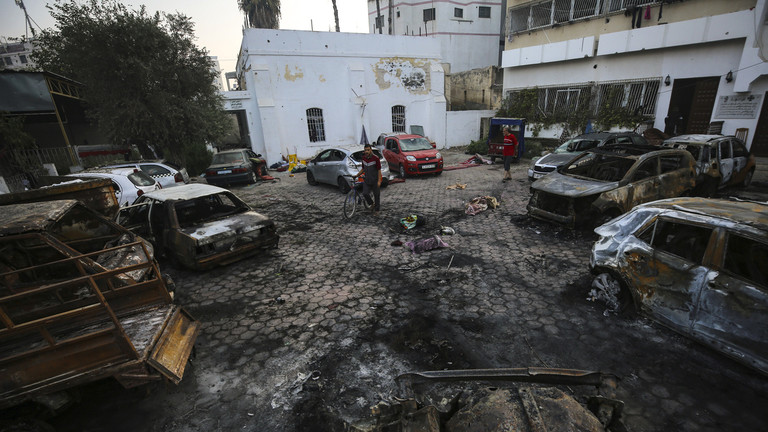NewsRescue
Independent video and audio analysis has shown fundamental flaws in Israel’s assertion that Palestinian militants were responsible for the deadly bombing of Gaza’s al-Ahli Hospital this week.
An explosion on Tuesday demolished the Christian-run hospital, commonly known as the Baptist Hospital. According to the Palestinian Health Ministry, the blast killed around 500 people.
The Israeli government has provided two pieces of evidence that they claim prove the building was hit by a Palestinian rocket: A video depicting a salvo of Palestinian rockets moving from east to west, one of which appears to have broken apart with a flash and fallen on the hospital; and an intercepted phone call in which Hamas members supposedly discuss how rockets fired by the Islamic Jihad may have landed on the hospital.
“The entire world should know: It was barbaric terrorists in Gaza, not the [Israel Defence Forces],” Israeli Prime Minister Benjamin Netanyahu wrote on social media on Tuesday night.
However, Al Jazeera and Channel 4 analysts examined the film and found that the flare was unrelated to the following explosion at the hospital. According to Al Jazeera, the explosion “was in fact consistent with Israel’s Iron Dome missile defence system intercepting a missile fired from the Gaza Strip and destroying it in midair.”
An incoming rocket or missile can be heard shrieking through the air before reaching the hospital in a second video filmed near the blast scene. Earshot is a non-profit organisation that specialises in audio analysis of video recordings.
Forensic Architecture, a research firm located at the University of London, confirmed Earshot’s results, claiming that the projectile most likely originated in Israel. According to the agency, further study of the crater left at the hospital indicated an approach from the north-east.
Earshot also investigated the telephone recording and discovered that, unlike ordinary calls, in which both persons’ voices are broadcast on the same audio channel, the recording consists of two independent recordings stitched together. Earshot, on the other hand, stated that it “cannot categorically state that the audible dialogue is fake… the level of manipulation required to edit these two voices together disqualifies it as a source of credible evidence.”
